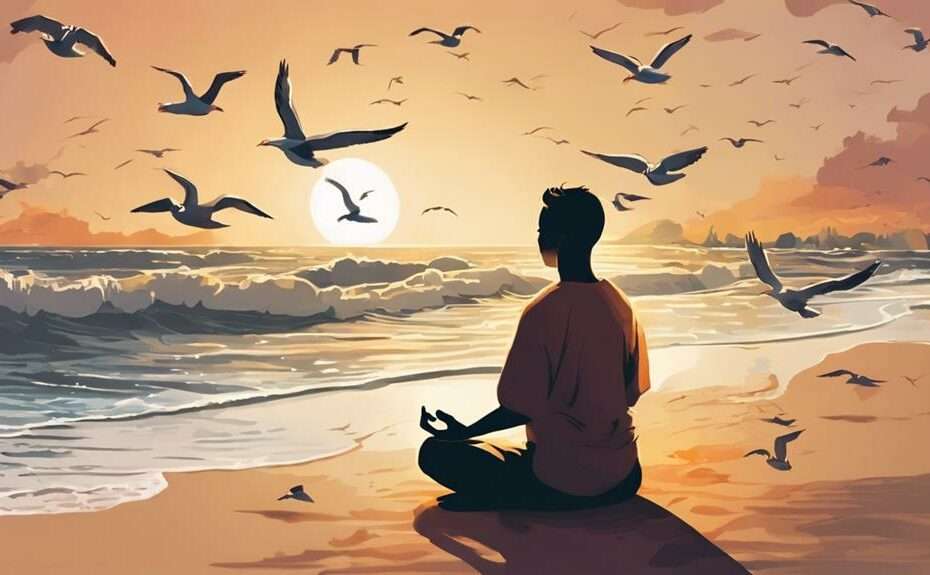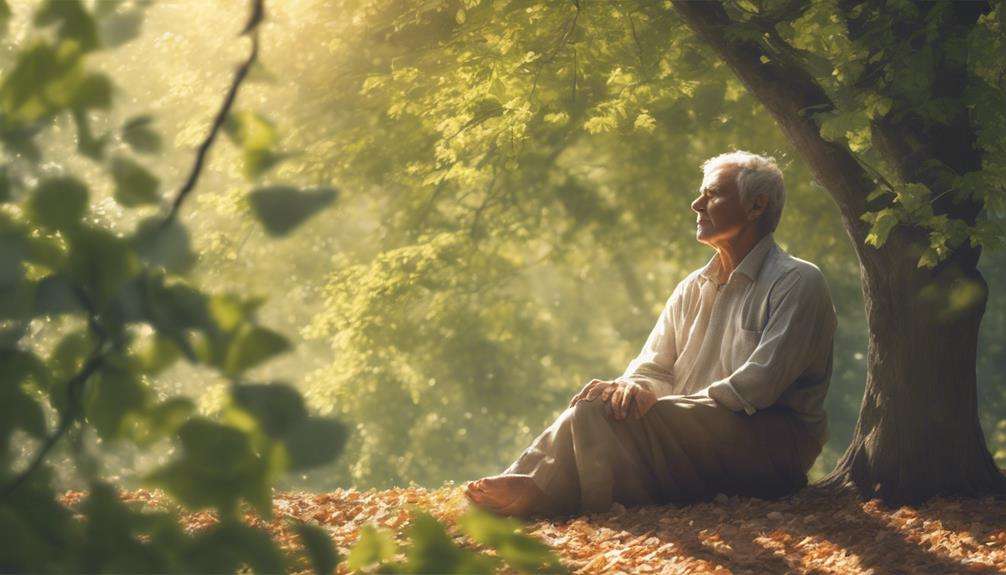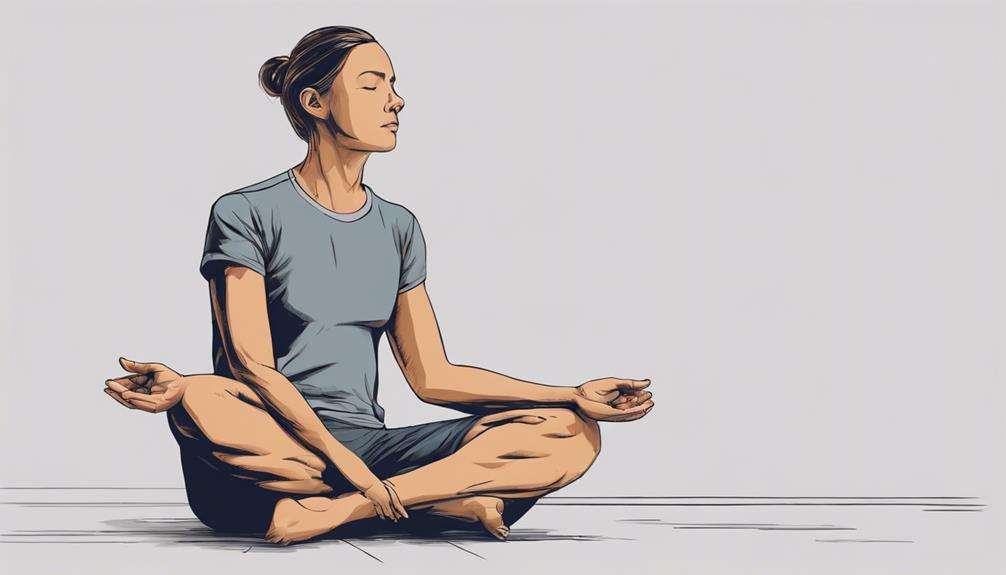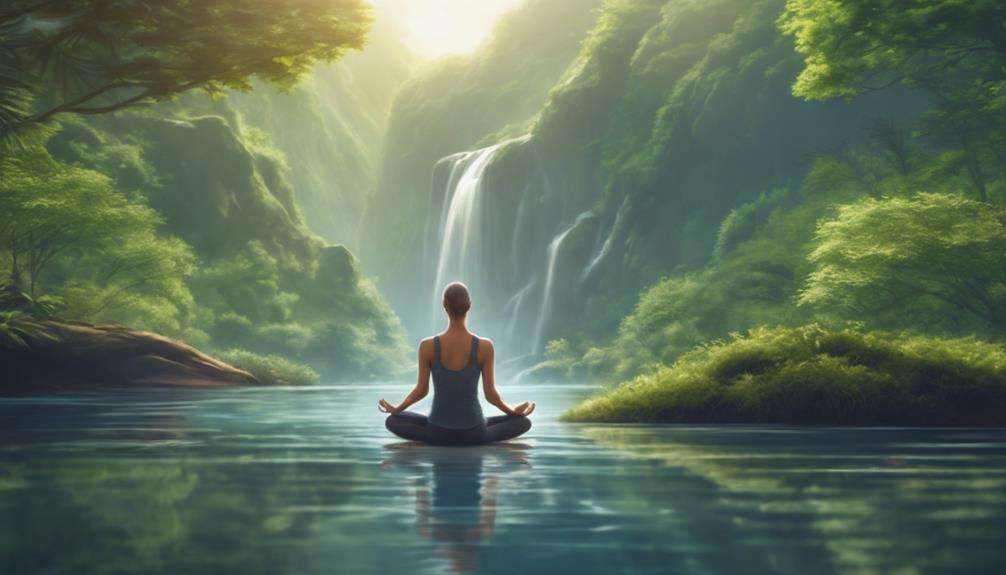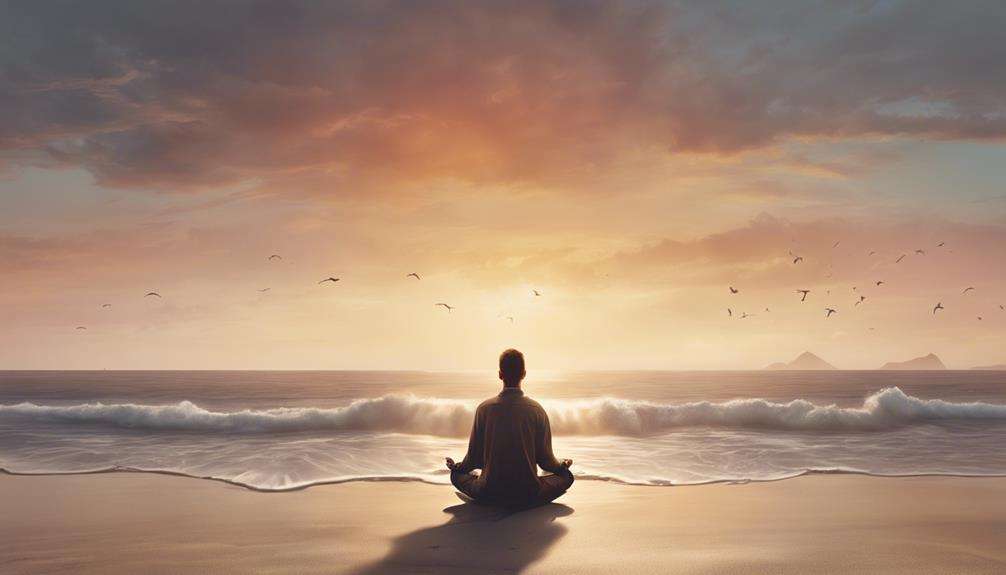As you navigate the bustling rhythm of everyday life, have you ever pondered on the juxtaposition of chaos and calmness? Picture yourself in a tranquil state, enveloped in serenity, yearning to discover the code sequences that release relaxation's gateway.
What if there were specific patterns, a series of actions, that could guide you towards a profound sense of peace and tranquility? Stay tuned to unravel the secrets of sequences that hold the power to promote relaxation and calmness effectively, transforming your well-being in ways you never imagined.
Key Takeaways
- Deep breathing techniques like box breathing and autogenic relaxation induce calmness and reduce stress effectively.
- Yoga practices, such as rhythmic movement and relaxation sequences, promote mental clarity and overall well-being.
- Meditation methods, including mindfulness and visualization, foster relaxation, stress management, and self-awareness.
- Mind-body practices like progressive muscle relaxation and body scan meditation release tension, enhance relaxation, and reduce anxiety.
Breathing Techniques for Relaxation
When seeking relaxation, mastering effective breathing techniques is essential for reducing stress levels and promoting calmness. Deep breathing, a fundamental relaxation technique, involves inhaling deeply through the nose and allowing the stomach to rise, followed by exhaling slowly through the mouth. This method helps in calming the mind and body, leading to reduced stress levels.
Box breathing, another powerful technique, consists of inhaling for four counts, holding for four counts, exhaling for four counts, and holding again for four counts. This structured breathing pattern aids in inducing relaxation promptly.
Autogenic relaxation techniques focus on repetitive positive statements to promote physical relaxation and stress reduction. By engaging in autogenic relaxation, you can effectively calm your mind and body.
Mindfulness practices, like mindful breathing meditation, encourage focusing on the present moment and enhancing mental clarity. Additionally, cue-controlled relaxation techniques involve associating a calming word with deep relaxation and repeating it during deep breathing exercises to achieve quick relaxation responses.
Progressive Muscle Relaxation Practice
Exploring the effectiveness of Progressive Muscle Relaxation in releasing tension and promoting deep relaxation is essential for enhancing overall well-being. This technique involves systematically tensing and relaxing different muscle groups to help you recognize the difference between tension and relaxation in specific areas. By starting from your feet and moving upwards through your body, Progressive Muscle Relaxation promotes a profound sense of calmness.
Here are three reasons why incorporating this practice into your routine can be beneficial:
- Stress Relief: Progressive Muscle Relaxation combined with deep breathing can greatly reduce stress and anxiety levels.
- Tension Release: Focusing on each muscle group allows for the targeted release of tension, leading to overall relaxation.
- Enhanced Calmness: By honing in on muscle sensations, this technique effectively promotes a deep sense of calmness and well-being.
Body Scan Meditation Benefits
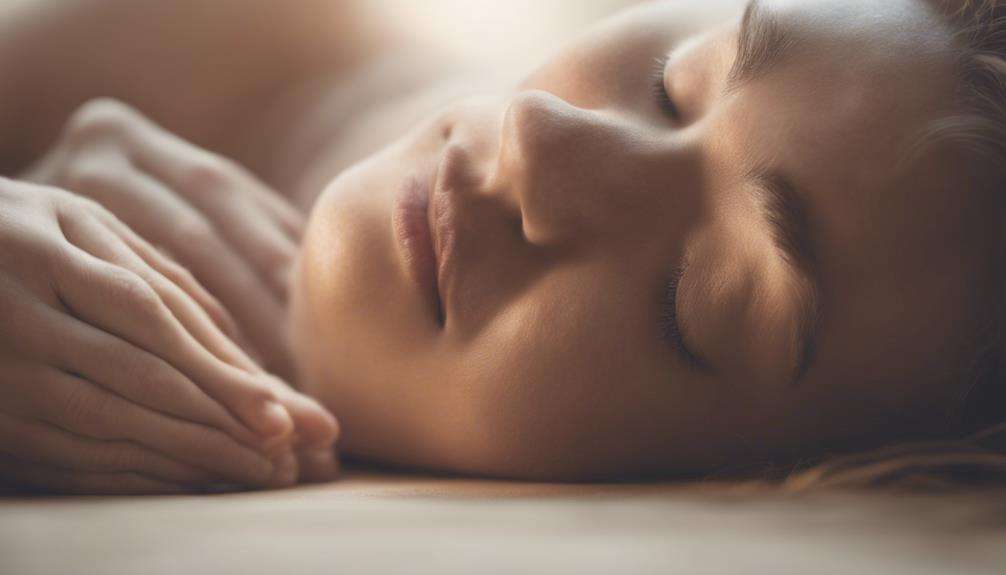
To fully appreciate the benefits of body scan meditation, you must explore its profound impact on mindfulness and relaxation. This practice involves focusing your attention on different body parts without judgment, allowing you to recognize and release bodily sensations. By starting from the feet and moving upwards through the body, body scan meditation enhances body awareness and aids in stress reduction, promoting calmness.
Whether done alone or with guided audio, this technique offers a versatile way to cultivate mindfulness and achieve a state of deep relaxation. Through the incorporation of sensory details and vivid visualization, body scan meditation can help you foster inner peace and a deeper connection with your body. Embracing this practice regularly can lead to a heightened sense of relaxation and an improved overall sense of well-being.
Visualization Methods for Calmness
Immerse yourself in the calming power of visualization methods, harnessing the strength of your mind to create serene and tranquil mental landscapes. Visualizing peaceful scenes can be a powerful tool in promoting calmness and reducing tension and anxiety.
Here are three ways visualization methods can help you achieve a state of relaxation:
- Creating Positive Mental Images: Picture yourself in a soothing environment like a peaceful beach or a serene forest. Focus on the details of this scene to transport your mind to a place of tranquility.
- Enhancing Mindfulness: By engaging in guided imagery sessions that encourage detailed visualization, you can improve your mindfulness and bring your attention to the present moment, letting go of worries and stress.
- Deepening the Relaxation Response: Guided imagery often involves a gradual winding down process, such as counting down or retracing steps, which can further enhance the relaxation response in your body and mind.
Self-Massage for Stress Relief
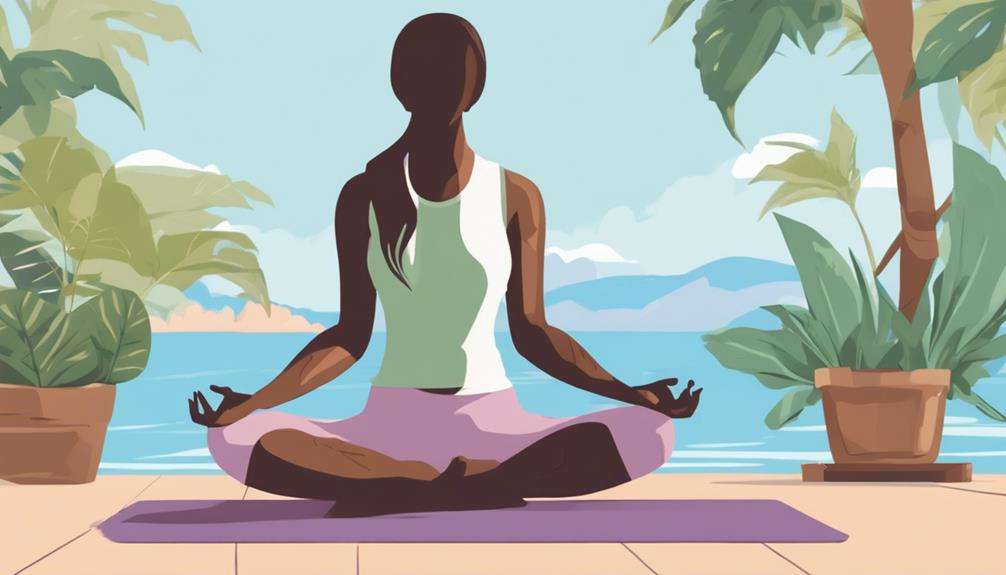
Discover how self-massage techniques can effectively alleviate stress by targeting muscle tension and promoting relaxation in key areas of your body. Self-massage is a convenient and affordable way to unwind, offering immediate relief from stress.
Techniques like gentle chops, kneading, and applying pressure on specific points can work wonders in releasing tension. Paying special attention to areas like the neck and shoulders, where stress often accumulates, can help you relax deeply.
By incorporating self-massage into your routine along with deep breathing or mindfulness practices, you can enhance the overall relaxation experience. These simple yet effective methods can't only alleviate stress but also improve your overall well-being.
Take a moment for yourself, focus on those areas of tension, and let the soothing touch of self-massage bring you the relaxation and calmness you deserve.
Mindfulness Meditation Practices
If you're seeking a way to center your mind and find peace, mindfulness meditation practices offer a powerful tool.
By focusing on your breath, engaging in mindful body scans, and practicing relaxation response techniques, you can cultivate a sense of calmness and clarity.
Research supports that these practices can enhance self-awareness, reduce stress, and contribute to emotional well-being.
Breathing Exercises Benefits
Breathing exercises, particularly mindfulness meditation practices, offer significant benefits for reducing stress and promoting relaxation effectively. When you engage in deep breathing techniques, you allow your body to activate its relaxation response, leading to a calmer state of mind.
By focusing on full, cleansing breaths, you can effectively manage stress levels and enhance your overall well-being. Mindfulness meditation, which involves being present without judgment, aids in stress reduction by bringing your attention to the current moment.
Learning and practicing deep breathing can be easily incorporated into your daily routine, providing you with a convenient tool for relaxation anytime, anywhere. Start reaping the benefits of deep breathing today for improved stress management and a more relaxed state of being.
Mindful Body Scan
Begin on a journey of mindfulness and relaxation through the practice of mindful body scan meditation, focusing your attention on different body parts without judgment.
Body scan meditation promotes relaxation by guiding you to recognize and release bodily sensations from your feet upwards. This mindfulness technique enhances body awareness, facilitating the release of tension and fostering a sense of calmness.
Utilizing visualization during body scan meditation can involve picturing serene environments to deepen relaxation and alleviate stress. Whether practiced independently or with the aid of guided audio, incorporating sensory details enriches the experience, immersing you in a state of tranquility.
Embrace the benefits of body scan meditation for a holistic approach to relaxation and heightened mindfulness.
Relaxation Response Techniques
Shifting from the mindful body scan practice, exploring relaxation response techniques such as mindfulness meditation practices can further deepen your journey towards calmness and enhanced well-being. When practicing mindfulness meditation, you engage in the present moment without judgment, fostering self-awareness and mental clarity. Incorporating guided audio can enhance the relaxation experience and overall wellness.
Consider trying body scan meditation to release bodily tension, systematically focusing on different body parts. Additionally, visualization techniques, where you imagine peaceful scenes, can effectively reduce anxiety and promote a sense of relaxation. Embrace these methods to activate your body's relaxation response, reduce stress, and cultivate a state of calmness within yourself.
Rhythmic Movement in Yoga
Incorporating rhythmic movements into your yoga practice can enhance relaxation and mindfulness. Rhythmic movement in yoga involves seamlessly flowing through poses synchronized with your breath, fostering a deep connection between mind and body. By focusing on mindfulness and body awareness during these fluid sequences, you can cultivate a sense of calmness and release tension stored in your body. This rhythmic practice not only promotes relaxation but also improves flexibility and balance, contributing to your overall well-being.
Engaging in yoga regularly can have profound effects on your mental clarity and stress levels. The rhythmic nature of yoga sequences helps to quiet the mind, allowing you to find peace and tranquility within yourself. Through this practice, you can experience a reduction in stress, increased relaxation, and heightened awareness of both your body and mind. Embrace the rhythmic movement in yoga to nurture a harmonious balance between your physical and mental well-being.
Frequently Asked Questions
What Are Effective Relaxation Techniques?
To effectively relax, try various techniques. Enhance calmness with deep breathing, visualization, and mindfulness practices. Engage in body scans, muscle relaxation, and guided imagery. Explore yoga, tai chi, or qigong. Use aromatherapy, hot baths, and relaxation music for a soothing experience.
Which of the Following Is the Most Effective Relaxation Technique?
In finding the most effective relaxation technique, consider various methods like breathing exercises, meditation techniques, muscle relaxation, visualization, mindfulness practices, guided imagery, body scan, autogenic training, and the relaxation response. Each offers unique benefits for relaxation and calmness.
What Is the Sequence for Progressive Relaxation Techniques?
To practice progressive muscle relaxation effectively, start with the feet and move upwards through the body, tensing and relaxing different muscle groups. Combine with deep breathing for enhanced calmness. This sequence promotes relaxation and tension release.
What Is the Correct Order of Sequence to Be Followed for Relaxing the Body in Deep Relaxation Technique?
To relax your body effectively, start by finding a quiet spot. Practice breathing exercises, focus on muscle relaxation, visualize calm scenes, scan your body for tension, meditate, use guided imagery, and try mindfulness exercises for stress relief.
Conclusion
You've learned about various sequences that promote relaxation and calmness effectively.
Did you know that practicing deep breathing for just 10 minutes a day can reduce stress levels by 40%?
Incorporating these techniques into your daily routine can greatly improve your overall well-being and help you manage stress more effectively.
Remember, taking care of your mental health is just as important as taking care of your physical health.
Start incorporating these relaxation sequences today for a healthier, happier you!
